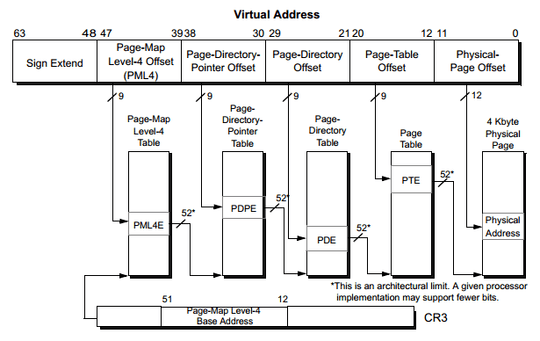A few points to consider, physical RAM is expensive. Sure 16 GB is cheaper now that 4GB was only a few years ago, but 2^64 (16 exabytes) ridiculously large.
So AMD's extensions of the x86 for x64 "allowed" up to 2^52 by limiting the registers. This does two things, lowers the cost of processors and improves performance. More registers that are not used means that there is a lot of empty space that must still be taken into account during operations.
And, in case you are not a math guy... The difference between three sizes is huge! I am no math guru, but by decimal 52 bit is about .02% of 64bit. 48 bit is 6% of 52. (someone check my math?)
As for why AMD allowed more physical RAM then virtual, the article states it is because AMD was thinking of servers. Servers need large amounts of physical RAM. Virtual RAM is too slow to support the average server applications for hundreds or thousands of employees.
My own thoughts: We have left the time when RAM was tiny, and hard drives had to support RAM. The price in RAM has fallen to a point where the average persona can put in more than enough RAM. Take typical applications, like Office which requires 1-2GB of RAM. My computer 7 years ago could handle that. Although with read and write speeds to disk, I would hope I never had to retrieve a 7GB file from virtual memory (using the old PM * 2.5 philosophy).
I also can only assume AMD wanted to leave room for registers that use the physical RAMs registers, like RAM on integrated GPUs.

For x86, the unused VA bits must be a sign extension of the MSbit of the VA. (ARM AArch64 provides the option of allowing 8 MSbits to be ignored by hardware so that they could be conveniently used for tags. Azul Systems Vega processor--part of a Java appliance--provided 16 bits of VA to be used for tags.) In the page table, reserved PA bits must be zero (primarily to ensure that software does not attempt to use them and break compatibility with later hardware). – Paul A. Clayton – 2013-10-18T23:38:04.400